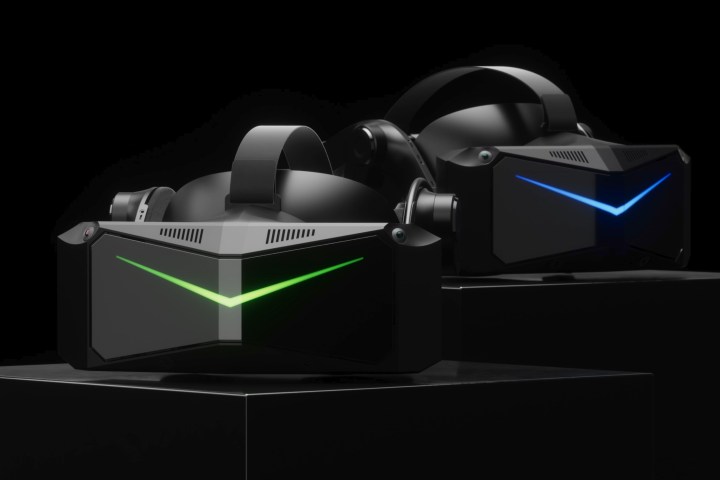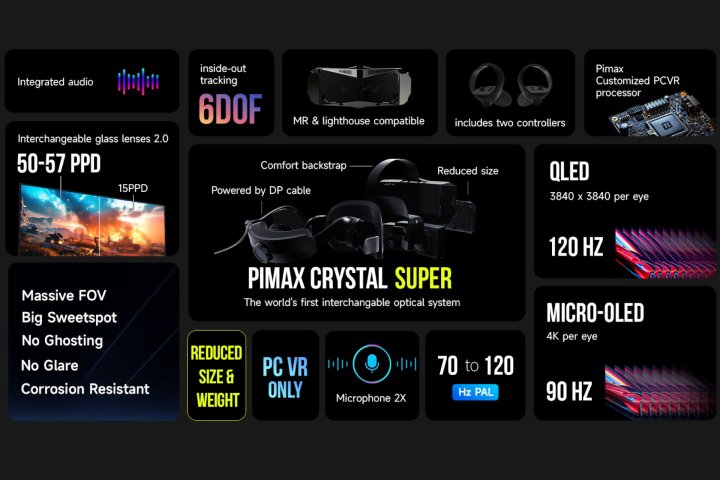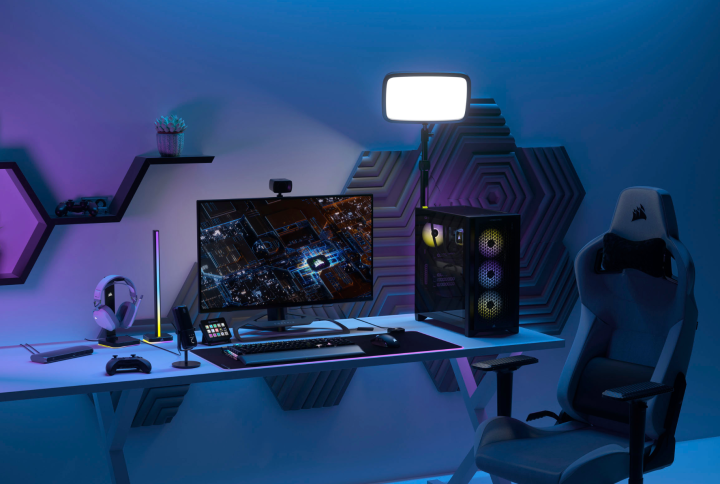
While the Apple Vision Pro offers ultra-high-resolution displays with 23 million pixels, the staggering $3,500 price might inspire you to look for Vision Pro alternatives.
Good news: Pimax just announced two new VR headsets, including a budget model that costs as low as $799 and a more advanced version starting at $1,799. Both are based on the design of one of the best VR headsets currently available — the Pimax Crystal that launched in May 2023 for $1,599 — but come with a serious upgrade in terms of resolution.
Pimax Crystal Super

The Pimax Crystal Super boasts 29.5 million pixels and comes in two configurations. With 3840 x 3840 pixels per eye, it beats the Vision Pro’s resolution with 28% more pixels, and nearly doubles the sharpness of the original Pimax Crystal, which is already an impressive VR headset.
There’s more to a VR headset than pixels, however. The Crystal Super includes eye-tracking with optional foveated rendering. The headset includes controllers and supports inside-out tracking, plus it also works with base stations.
For $1,799, you can preorder a QLED version with mini-LED backlighting for local dimming. For $1,999, the Crystal Super gets an upgrade to micro-OLED displays.
While OLED has the best blacks and most vivid colors at 90Hz, QLED offers less motion blur and a refresh rate of up to 120Hz. If you ‘d like the option of swapping between QLED and OLED, you can pre-order the Crystal Super with both in a bundle for $2,399.
Pimax Crystal Light

Pimax also announced the Crystal Light, which matches the resolution of the original Crystal, but cuts the weight by 30%. It features the same 2880 × 2880 pixel-per-eye QLED displays at up to a 120Hz refresh rate.
The Crystal Light starts at $699 for standard backlighting. To add local dimming with mini-LED backlighting, the cost climbs to $899, which is still $700 less than the original model.
Inside-out tracking and controllers are included, but you’ll need a capable gaming PC to run it.
PC VR only

Pimax was able to keep the prices of its new headsets low despite the high-quality displays because the Crystal Super and Crystal Light lack the stand-alone mode of the original Pimax Crystal.
Meanwhile, cutting the Qualcomm Snapdragon XR2 chip, memory, and storage reduces the weight and the cost. This is a good trade-off since there’s a limited selection of standalone apps. If you want an all-in-one VR headset, Meta’s Quest 3 is a better choice.
Since PC VR relies on your Windows computer for processing and graphics performance, it’s important to make sure you have a good gaming PC with a discrete GPU for the Crystal Light or a high-end gaming system if you want to take advantage of the incredible resolution of the Crystal Super.
The Pimax Crystal Super is expected to start shipping in the fall of 2024, while the Crystal Light could ship as early as May. For more details or to pre-order, visit the Pimax website.
Editors' Recommendations
- Meta Quest 4: Here’s what we want from the next big VR headset
- How Vision Pro tech could come to the Mac
- Does the Vision Pro work with glasses and contacts?
- Does the Apple Vision Pro come with a battery?
- This one feature could prevent motion sickness, but the Vision Pro doesn’t have it




